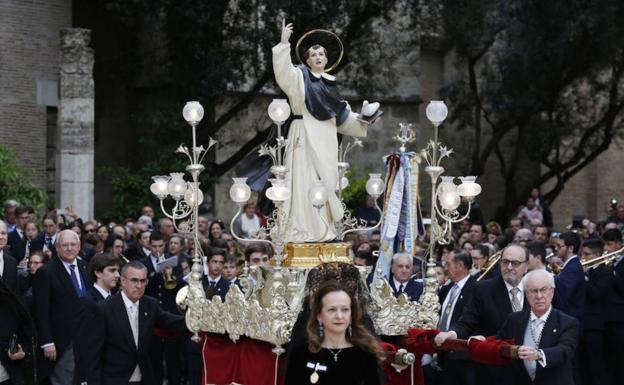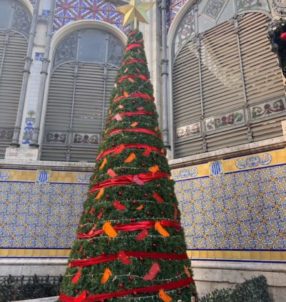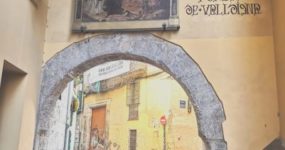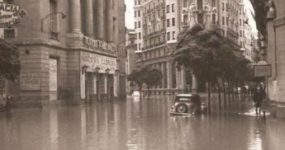##The weekend following Easter is known as the Pascua de San Vicente. The first Monday after Easter Monday is San Vicente Ferrer day, which means we all get a second consecutive long weekend. San Vicente Ferrer, along with his luckless namesake San Vicente the martyr ( who was tortured and executed by the Romans and thrown on a rubbish dump), are the most iconic Valencian saints. San Vicente Ferrer is the patron saint of the region and San Vicente Martir is the patron saint of the city.
Born in C/ del Mar in Valencia in 1350, Vicente Ferrer was never martyred, tortured or even called nasty names and he probably never even went near a rubbish dump. Vicente was the son of a rich lawyer, the godson of a royal prince and a prize networker who was close friends with the Borgia family and intellectuals like Erasmus and Machiavelli. He was an extremely able politician, a dealer in influence and a proclaimer of Popes who had a great knack for always supporting the winning side, jumping ship whenever it suited him. With incredible foresight he baptised Rodrigo de Borgia, who was to become the first Borgia Pope, dropping one of the heaviest hints in history by declaring, “This boy will one day be Pope and he will name me a saint”. Vicente was indeed fast-tracked to sainthood, just thirty years after his death, when Rodrigo ascended to the Papacy.
Throughout the week you’ll start to see what look like ornate Punch and Judy puppet theatres popping up on corners all over the city centre. These are San Vicente’s altars, which provide the scenery for short plays acted out in Valenciano by local children. The plays depict the many miracles performed by the saint, because by far the coolest thing about San Vicente Ferrer is that he was the most prolific miracle worker of all time. Vicente is credited with 873 miracles, more than any other saint. He is usually depicted with his index finger aloft because, in the same way that Samantha from Bewitched could do magic by wriggling her nose, Vicente could zap miracles out just by lifting his finger like some sort of ecclesiastical superhero.
There are 18 altars in total around the city, the oldest is in C/ del Mar where they have been putting on the plays since 1561. Other altars can be found in Bolsería, the Central Market, Plaza del Carmen, El Pilar and Ruzafa. One of the miracles you may see dramatised is El Salser, or ‘the cruet set miracle’, where San Vicente cured a neighbour’s fever with just oil and vinegar (there is a commemorative plague on the door of the house where this is purported to have happened at C/ del Mar, 37). Another famous miracle was the Mocadoret, ‘the little handkerchief miracle’, where San Vicente proclaimed to his followers that there were people nearby who needed their help. “Where are these people?” his followers asked. The saint told them to follow his hanky and he threw it up in the air and into an attic window where, sure enough, they found a poor and needy family (not all that unusual in medieval Europe, to be fair). The square where this is said to have taken place is just off the Plaza de la Reina and is named after the miracle (Plaza Miracle del Mocadoret).
Seats are out out around the altars which are usually filled by the parents of the kids taking part. In the old days, money was thrown for the children by the appreciative crowd. The kids had to hand over the cash to the local priest, although there’s more than one story of junior San Vincentes performing a little miracle of their own by stuffing the coins into their shoes and hoping nobody had seen them.
David Rhead and José Marín
Article copyright ’24/7 Valencia’
Related Post
This site uses Akismet to reduce spam. Learn how your comment data is processed.

























Leave a comment